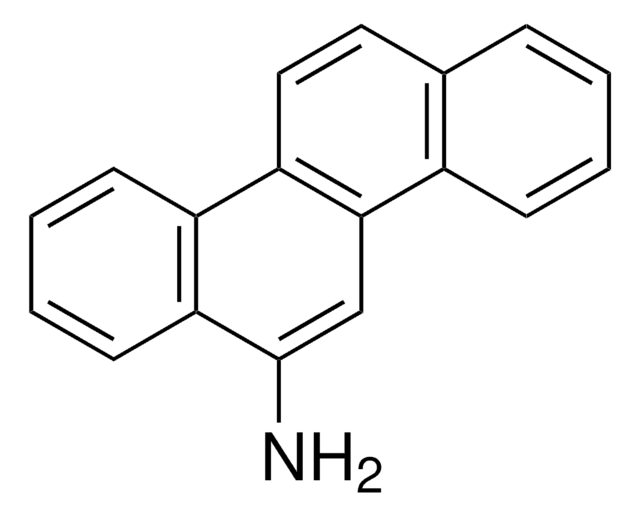All Photos(1)
About This Item
Empirical Formula (Hill Notation):
C18H12
CAS Number:
Molecular Weight:
228.29
Beilstein:
1909297
EC Number:
MDL number:
UNSPSC Code:
12352103
PubChem Substance ID:
Recommended Products
Assay
98%
form
powder
bp
448 °C (lit.)
mp
252-254 °C (lit.)
SMILES string
c1ccc2c(c1)ccc3c4ccccc4ccc23
InChI
1S/C18H12/c1-3-7-15-13(5-1)9-11-18-16-8-4-2-6-14(16)10-12-17(15)18/h1-12H
InChI key
WDECIBYCCFPHNR-UHFFFAOYSA-N
Looking for similar products? Visit Product Comparison Guide
Signal Word
Danger
Hazard Statements
Precautionary Statements
Hazard Classifications
Aquatic Acute 1 - Aquatic Chronic 1 - Carc. 1B - Muta. 2
Storage Class Code
6.1D - Non-combustible acute toxic Cat.3 / toxic hazardous materials or hazardous materials causing chronic effects
WGK
WGK 3
Flash Point(F)
Not applicable
Flash Point(C)
Not applicable
Choose from one of the most recent versions:
Already Own This Product?
Find documentation for the products that you have recently purchased in the Document Library.
Customers Also Viewed
José M Lorenzo et al.
Meat science, 89(1), 105-109 (2011-04-20)
The polycyclic aromatic hydrocarbon (PAH) content in two traditional smoked sausages from Spain was determined. Results showed, that total average levels of PAHs found were higher in "Chorizo de cebolla" (101.81 vs. 98.48 μgkg(-1)). Most contents of PAHs found in
M J Smith et al.
Journal of hazardous materials, 192(3), 1219-1225 (2011-07-12)
A comparison was made between the dissipation of polycyclic aromatic hydrocarbons (PAHs) in soil freshly spiked with pure PAHs, soil spiked with a coal tar mixture and a contaminated soil from a former coking works where the PAHs had been
Novel 6,12-disubstituted chrysene as potent anticancer agent: synthesis, in vitro and in vivo study.
Bimal K Banik et al.
European journal of medicinal chemistry, 45(10), 4687-4691 (2010-08-13)
We describe herein the synthesis of novel 6,12-distributed chrysene as potent anticancer agents. In vitro and in vivo studies are also reported here.
L Viñas et al.
Chemosphere, 75(4), 534-541 (2009-01-20)
Aliphatic and aromatic hydrocarbons were determined in three species of commercial shellfish, namely razor shells (Ensis arcuatus and Ensis siliqua), goose barnacle (Pollicipes cornucopia) and sea urchin (Paracentrotus lividus), living in different habitats and exhibiting different feeding behaviors. The samples
Daoud Ali et al.
Toxicology letters, 204(2-3), 199-207 (2011-05-17)
Chrysene is one of the basic polycyclic aromatic hydrocarbon (PAH) which is toxic environmental pollutant and consistently exposed to sunlight. However, little information is available on its photogenotoxicity. The objective of the present study was to analyze the effects of
Our team of scientists has experience in all areas of research including Life Science, Material Science, Chemical Synthesis, Chromatography, Analytical and many others.
Contact Technical Service


![Indeno[1,2,3-cd]pyrene analytical standard](/deepweb/assets/sigmaaldrich/product/structures/231/153/b0b230c2-efa0-4f43-a261-66b931ead3d2/640/b0b230c2-efa0-4f43-a261-66b931ead3d2.png)









